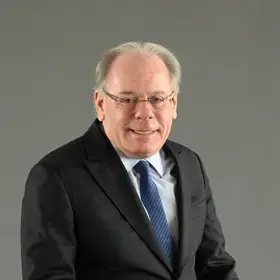By Angela Finlay, Lecturer in the M.S. in Human Capital Management program
We are witnessing a shift in the professional landscape, and there is no longer a one-size-fits-all approach to career paths.
The traditional ways of advancement in organizations might no longer meet the needs of employees who are increasingly expected to change jobs and make multiple career pivots. This, coupled with the disruptive effects of technology, underscores the need for adaptability and resilience in our professional journeys. Changing motivators of employees, the integration of AI into jobs, and the onset of more options in the gig economy are shifting how people look at careers.
As a chief human resources officer, parent, and educator teaching Finance for Effective HCM in Columbia’s Human Capital Management program, I often think about how we set people up for success. At the beginning of my career, I felt compelled to follow a linear professional path that would give me the skills and experiences to propel myself into my dream job. I started my career in an entry-level position and then found opportunities to move up in the same function. I also built programs to set people similarly, with career ladders and lattices where they’re well-positioned to move to the next role.
Yet, despite clear career paths and well-thought-out programs, we find that 68% of employees are not engaged in their jobs, with 15% actively disengaged. Nineteen percent are miserable in their day-to-day work life.
In addition to poor workplace sentiments, some studies suggest that we hit our lowest happiness levels in our 40s and 50s, also known as “the midlife crisis.” A significant part of this is because people reach a point when the reality of their career is not what they expected, and they feel stuck. Moreover, this disillusionment often starts to impact them during what can be a demanding phase of raising children and/or caring for aging parents.
We also continue to hear about people trying to exit the workforce or reimagine roles for themselves. People today are expected to make three to seven career pivots in their lifetime, which means an average job tenure of 4.3 years for men and 3.9 years for women.
My research indicates that it is time to stop promoting predefined career trajectories and start providing paths for multi-prong careers. It has led me to think about supporting “career pathfinders,” defined as those who will explore ways to carve out new routes.
How do we better foster career pathfinders in our organizations? We need development programs and approaches that allow employees to discover their way, especially down unconventional paths, and we must take steps to support them.
First, organizations must focus on helping employees develop skills and knowledge that can be leveraged in multiple iterations—not just to get to the next level. Developing a “skills taxonomy” (an exhaustive inventory of technical and soft skills) for each role in the organization allows employees to see compatible positions beyond the ones within their own organizational chart or functional areas.
Next, we need to implement mid-career mentoring programs that openly discuss transitions and expectations and allow participants to learn from those who have done so before. Employees might feel stuck in their roles because they fear the risk of trying something new and failing, especially if that involves taking a lower-level role to shift into a new functional area. Coaching employees about how to deal with this risk is just as important to our talent management programs as is our succession planning.
Managers might be reluctant to discuss transitions, especially with high performers, but the alternative is burnout and demotivation. Statistically, happy employees are more engaged workers, and we all need help avoiding the low happiness levels of the mid-life crisis.
Finally, we must create environments that foster experimentation and new projects. Our employees in specific functional areas should be given opportunities to work on projects that expand their horizons. For example, is there an opportunity for a senior accountant to move to a project management department and use their budgeting skills while building project management knowledge? Is there an opportunity for the marketing associate to work on an employee value proposition task force in human resources to expand their knowledge?
As leaders, we must shift from offering linear career paths to preparing employees for success in career journeys.
About the Author
Angela Finlay is chief human capital strategist at Windward Human Capital Management LLC. Finlay was a former CHRO/head of HR at organizations ranging from Global Fortune 150 to small start-up companies. She is a lecturer in the M.S. in Human Capital Management program at Columbia’s School of Professional Studies. She is also the author of the textbook Leading with Data-Driven Insights (January 2024).
About the Program
The Columbia University M.S. in Human Capital Management program prepares graduates to be world-class HCM strategists able to address changing needs in building and motivating talented, engaged workforces in the private, public, academic, and not-for-profit sectors. The program is available part-time, full-time, on-campus, and online.


